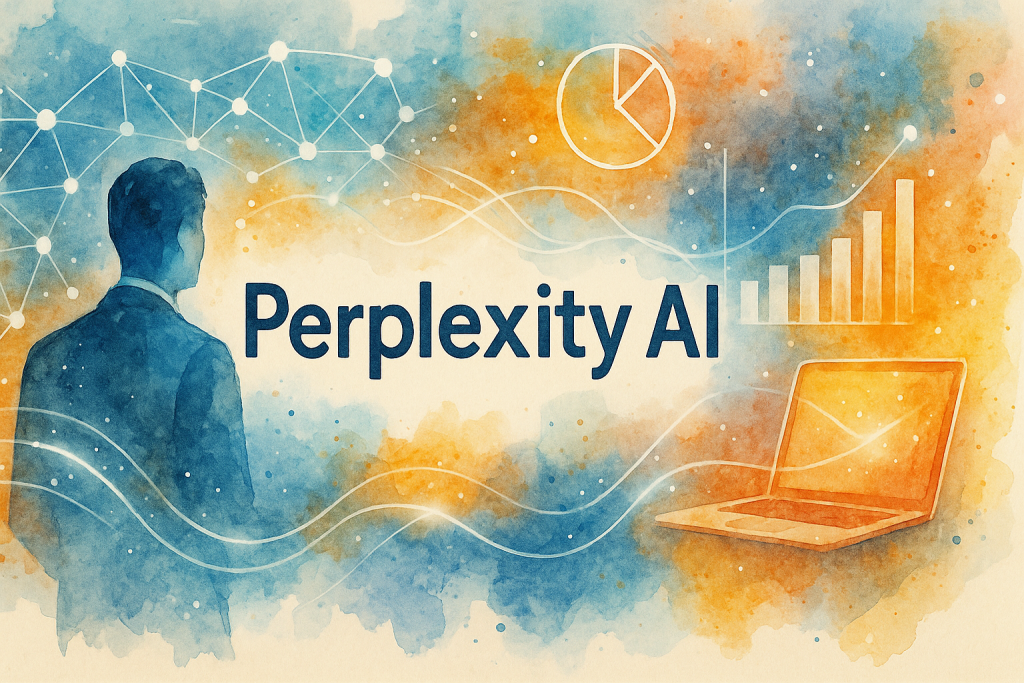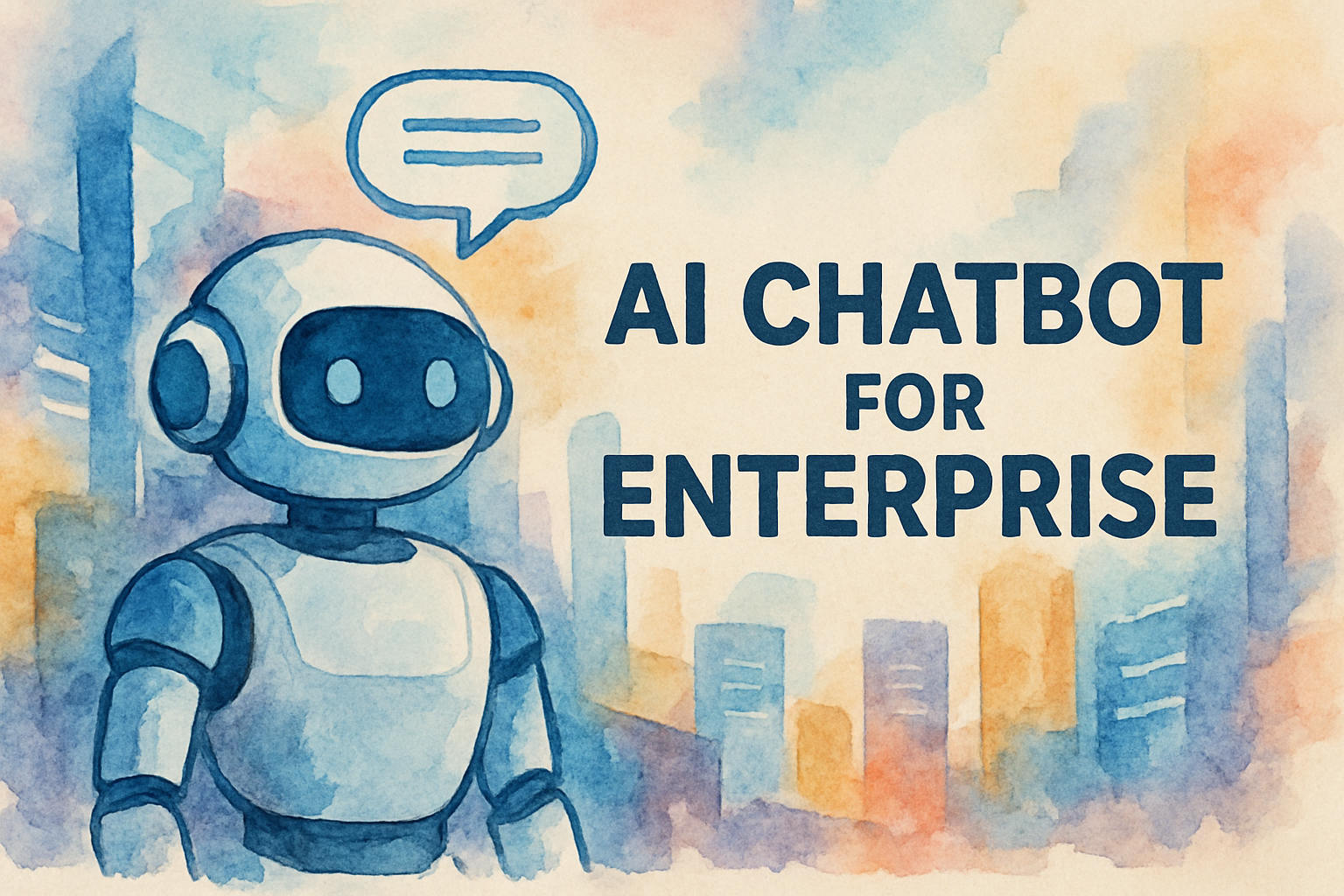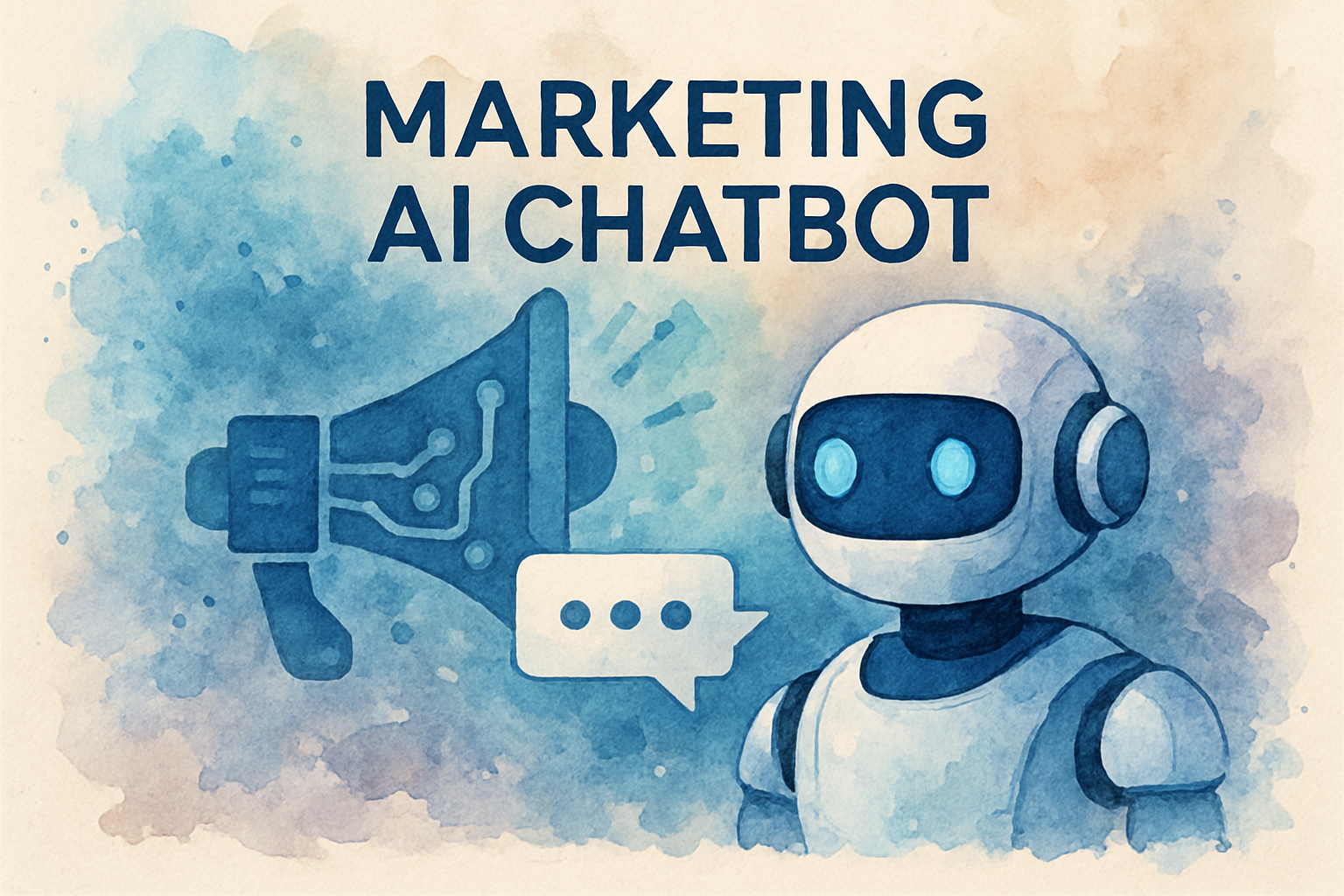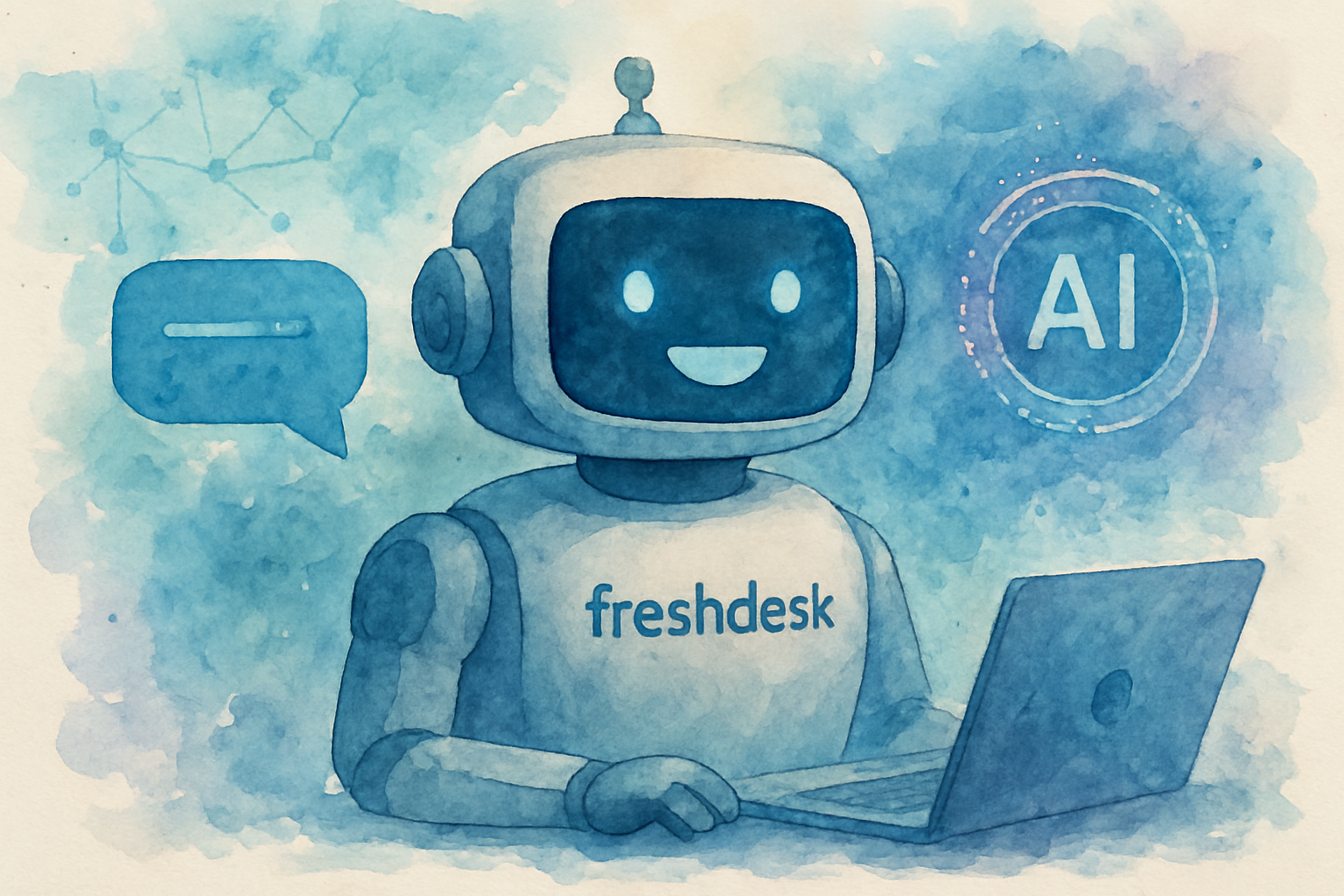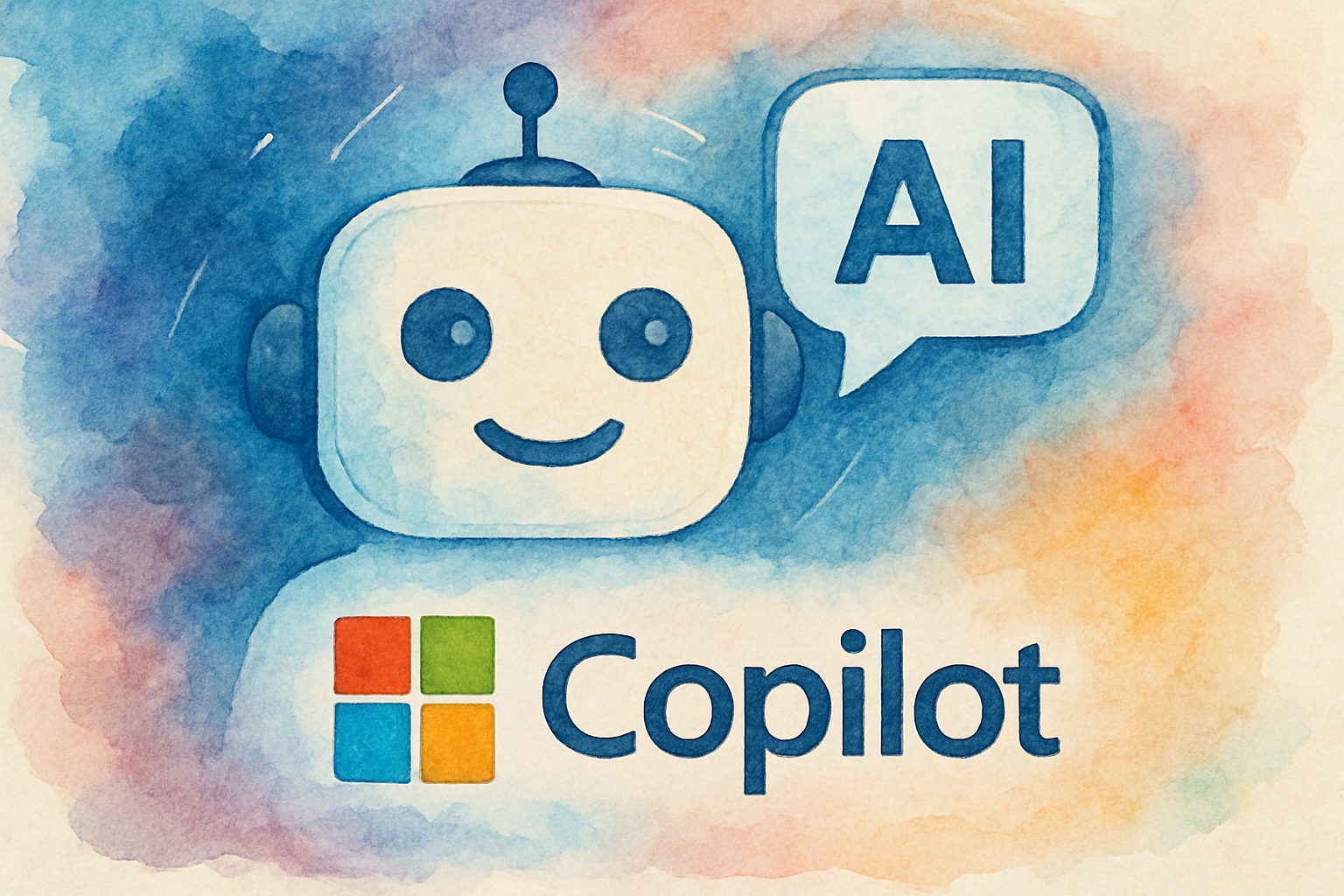How Perplexity AI is Revolutionizing Business Research: The Ultimate Guide to Crushing Your Competition in 2025
In today’s hyper-competitive business landscape, the difference between market leaders and laggards often comes down to one critical factor: the speed and quality of research insights. Traditional research methods—manual data collection, fragmented tools, and time-consuming analysis—are no longer sufficient to keep pace with rapidly evolving markets. Enter Perplexity AI, a groundbreaking artificial intelligence platform that’s fundamentally transforming how businesses gather, analyze, and act on competitive intelligence.
According to recent industry data, companies leveraging AI-powered research tools experience a 43% reduction in time-to-insight and a 37% improvement in decision-making accuracy. As we navigate through 2025, Perplexity AI has emerged as the secret weapon for organizations seeking to outmaneuver their competition through superior market intelligence.
This comprehensive guide will walk you through everything you need to know about harnessing Perplexity AI for business research—from understanding its core capabilities to implementing proven strategies that deliver measurable competitive advantages. Whether you’re a startup founder, marketing executive, or business analyst, you’ll discover actionable insights to revolutionize your research workflow and crush your competition.
Understanding Perplexity AI: The Next Generation of Business Intelligence
What is Perplexity AI?
Perplexity AI is an advanced conversational AI research assistant that combines the power of large language models with real-time web search capabilities. Unlike traditional search engines that simply return a list of links, Perplexity AI synthesizes information from multiple authoritative sources to provide comprehensive, citation-backed answers to complex business questions.
Think of it as having a tireless research analyst who can instantly access and analyze the entire internet, academic databases, and industry publications—then distill that information into clear, actionable insights. The platform leverages cutting-edge natural language processing to understand context, follow-up questions, and nuanced business queries that would stump conventional research tools.
What sets Perplexity AI apart is its ability to provide transparent, verifiable research. Every answer includes citations to original sources, allowing you to verify information and dive deeper into specific aspects of your research. This transparency is crucial for business decision-making, where the cost of acting on inaccurate information can be substantial.
Key Features and Capabilities
Perplexity AI offers a robust suite of features specifically designed to accelerate business research:
- Real-Time Information Access: Unlike static AI models trained on historical data, Perplexity AI searches the web in real-time, ensuring you’re working with the most current market intelligence, competitor updates, and industry trends.
- Multi-Source Synthesis: The platform doesn’t just pull information from a single source. It analyzes dozens of relevant sources simultaneously, identifying patterns, contradictions, and consensus views across the information landscape.
- Conversational Follow-Ups: Research rarely follows a linear path. Perplexity AI maintains context across multiple queries, allowing you to refine your research direction naturally through follow-up questions without starting from scratch.
- Citation Transparency: Every claim is backed by specific source citations, enabling you to verify information, assess source credibility, and explore primary materials for deeper analysis.
- Focus Modes: Specialized search modes for academic research, news monitoring, and general web search allow you to tailor your research approach to specific business needs.
- Thread Organization: Save and organize research threads by project, competitor, or topic, creating a searchable knowledge base for your entire organization.
How It Differs from Traditional Research Tools
The contrast between Perplexity AI and traditional research methodologies is striking. Conventional approaches typically involve multiple disconnected steps: searching Google for relevant articles, manually reading through dozens of sources, copying information into spreadsheets, and attempting to synthesize insights across fragmented data points. This process is not only time-consuming but also prone to human error and bias.
Perplexity AI bridges these gaps by functioning as an intelligent research orchestrator. It performs the search, analysis, and synthesis steps simultaneously, dramatically compressing research timelines from days to minutes. The conversational interface eliminates the learning curve associated with complex business intelligence platforms, making sophisticated research accessible to every team member regardless of technical expertise.
The Impact of Perplexity AI on Business Research
Accelerating Data Collection and Analysis
Speed is currency in modern business. The organization that identifies an emerging trend, competitive threat, or market opportunity first gains a decisive first-mover advantage. Perplexity AI compresses research timelines by orders of magnitude, transforming processes that once required weeks into tasks completed in hours.
Consider a typical competitive analysis project. Traditional approaches might involve assigning team members to manually research competitor websites, read industry reports, analyze social media presence, and compile findings into a presentation. This process easily consumes 40-60 hours of labor across multiple team members.
With Perplexity AI, you can query: “Analyze the product strategy, pricing model, and customer reviews for [Competitor X] over the past six months.” Within minutes, you receive a comprehensive synthesis drawing from press releases, product announcements, customer review sites, industry analyst reports, and social media discussions—complete with citations for verification.
This acceleration doesn’t just save time; it fundamentally changes what’s possible. Teams can now conduct weekly competitive intelligence updates instead of quarterly reviews. Product managers can validate market assumptions in real-time rather than waiting for scheduled research sprints. Marketing teams can respond to competitor campaigns within hours instead of weeks.
Enhancing Accuracy and Depth of Insights
Speed without accuracy is worthless—and potentially dangerous. One of Perplexity AI’s most valuable contributions is its ability to enhance both the breadth and depth of business insights while maintaining high accuracy standards.
The platform’s multi-source synthesis approach naturally reduces the risk of acting on outlier information or biased sources. By analyzing consensus across multiple authoritative sources, Perplexity AI helps identify what’s signal versus noise in the information landscape. When sources disagree, the platform highlights these contradictions, prompting deeper investigation rather than presenting a false consensus.
The citation system serves as a built-in quality control mechanism. Unlike AI systems that generate plausible-sounding but potentially fabricated information, every Perplexity AI response is grounded in verifiable sources. This transparency allows research teams to assess source credibility, identify potential biases, and make informed judgments about information reliability.
Moreover, the conversational interface enables iterative refinement of research questions. Initial queries often reveal gaps in understanding or new angles worth exploring. The ability to naturally follow up with clarifying questions—”What about their enterprise pricing?” or “How does this compare to industry benchmarks?”—leads to more comprehensive and nuanced insights than one-shot research queries.
Real-Time Market and Competitor Monitoring
Markets don’t wait for your quarterly research cycle. Competitors launch products, industry regulations change, and customer preferences shift continuously. Perplexity AI’s real-time capabilities transform business research from a periodic activity into an ongoing competitive intelligence operation.
Forward-thinking organizations are establishing daily or weekly research routines using Perplexity AI to monitor critical business dimensions. A typical monitoring workflow might include queries like:
- “What new products or features have our top three competitors announced in the past week?”
- “What are the latest regulatory developments affecting our industry?”
- “What emerging technologies are gaining traction in our market segment?”
- “What are customers saying about our latest product release compared to competitor alternatives?”
This continuous monitoring approach enables proactive rather than reactive strategy. Instead of discovering a competitor’s new feature months after launch, you’re aware within days—providing time to formulate a strategic response. Rather than being blindsided by regulatory changes, you’re tracking developments as they unfold, allowing for advance preparation.
The cumulative effect of real-time monitoring is a significant information advantage. While competitors operate on delayed, periodic intelligence, your organization maintains an up-to-the-minute understanding of market dynamics, enabling faster, more informed decision-making across all business functions.
Actionable Strategies for Leveraging Perplexity AI
Integrating Perplexity AI into Your Research Workflow
Successfully implementing Perplexity AI requires more than simply signing up for an account. The organizations achieving the greatest impact are those that thoughtfully integrate the platform into existing research workflows and establish clear processes for leveraging its capabilities.
Start by identifying your highest-value research use cases. Where does your team currently spend the most time on manual research? Which research questions are most critical to business decisions? Common high-impact applications include:
- Pre-Meeting Preparation: Before important client meetings, sales calls, or partnership discussions, use Perplexity AI to quickly research the other party’s recent news, strategic initiatives, and potential pain points.
- Content Research: Marketing and content teams can dramatically accelerate topic research, competitor content analysis, and trend identification for content planning.
- Due Diligence: Investment decisions, partnership evaluations, and vendor selection processes benefit from rapid, comprehensive background research.
- Market Sizing: Quickly gather data points for market size estimates, growth projections, and opportunity assessments.
Establish research templates for recurring needs. Create saved queries or prompt frameworks for common research scenarios—competitive analysis, market trend reports, customer sentiment analysis. This standardization ensures consistency and makes it easier for team members to leverage Perplexity AI effectively.
Integrate Perplexity AI into your existing tools and workflows. While the platform works excellently as a standalone tool, its value multiplies when connected to your broader business intelligence ecosystem. Export research findings into your CRM, project management tools, or knowledge management systems to ensure insights reach decision-makers.
Automating Competitor Analysis and Benchmarking
Competitor intelligence is perhaps the most universally valuable application of Perplexity AI. Every organization, regardless of industry or size, benefits from understanding what competitors are doing, how they’re positioning themselves, and where opportunities exist to differentiate.
Develop a structured competitor monitoring framework using Perplexity AI. Create a matrix of competitors and research dimensions you want to track regularly:
- Product Development: “What new features or products has [Competitor] launched in the past month?”
- Pricing Strategy: “How does [Competitor’s] pricing compare to ours? Have they made recent changes?”
- Marketing Positioning: “What key messages and value propositions is [Competitor] emphasizing in their recent marketing?”
- Customer Sentiment: “What are customers saying about [Competitor] in reviews and social media?”
- Hiring Patterns: “What roles is [Competitor] actively hiring for, and what does this suggest about their strategic priorities?”
- Partnership Activity: “What new partnerships or integrations has [Competitor] announced?”
Schedule regular competitor intelligence sessions—weekly or bi-weekly depending on market velocity. Assign team members to run standardized queries for specific competitors, then compile findings into a shared intelligence brief. This systematic approach ensures no competitor activity slips through the cracks.
Use Perplexity AI for competitive benchmarking beyond direct competitors. Query industry best practices, emerging players in adjacent markets, and innovative approaches from other industries that might be adapted to your context. This broader perspective often reveals opportunities that narrow competitor-focused research misses.
Identifying Emerging Trends and Opportunities
The most valuable insights often come from spotting trends before they become obvious. Perplexity AI excels at trend identification by synthesizing signals across diverse information sources—academic research, industry publications, startup funding announcements, technology forums, and social media discussions.
Develop a trend monitoring practice focused on your strategic horizons. For near-term trends (3-6 months), query current industry discussions, recent conference themes, and emerging customer demands. For medium-term trends (6-18 months), explore technology developments, regulatory changes, and shifting market dynamics. For long-term strategic trends (18+ months), investigate academic research, venture capital investment patterns, and adjacent industry innovations.
Effective trend queries combine specificity with openness. Instead of asking “What are the trends in marketing?” try “What emerging technologies are B2B SaaS companies adopting for customer acquisition in 2025?” or “What regulatory changes are likely to impact data privacy practices in the next 18 months?”
Create a trend validation process. When Perplexity AI surfaces a potentially significant trend, dig deeper with follow-up queries: “What companies are leading in [trend]?” “What are the main challenges or barriers to adoption?” “What’s the projected market size or growth rate?” This validation helps distinguish genuine opportunities from hype.
Establish a cross-functional trend review process. Share Perplexity AI trend findings with product, marketing, sales, and executive teams regularly. Different functions will interpret trends through their unique lenses, often revealing implications and opportunities that wouldn’t be apparent from a single perspective.
Case Studies: Businesses Succeeding with Perplexity AI
Example 1: Gaining a Competitive Edge in Product Development
A mid-sized B2B SaaS company specializing in project management software was struggling to differentiate in an increasingly crowded market. Their product team spent weeks researching competitor features, customer pain points, and emerging needs, but the slow research cycle meant they were always playing catch-up rather than leading.
After implementing Perplexity AI, the product team established a weekly competitive intelligence routine. Every Monday morning, they ran a series of queries analyzing competitor product updates, customer review sentiment, and feature requests across various platforms. This real-time intelligence revealed a consistent pattern: customers across multiple competitor platforms were expressing frustration with integration capabilities for remote team collaboration tools.
Armed with this insight, the product team quickly validated the opportunity through additional Perplexity AI research on integration preferences, technical requirements, and willingness to pay. Within six weeks, they had prioritized and begun development on a comprehensive integration suite specifically designed for remote teams—beating larger competitors to market by several months.
The result? A 34% increase in new customer acquisition in the quarter following launch, with the integration capabilities cited as the primary decision factor by 67% of new customers. The company’s ability to identify and act on the opportunity faster than competitors created a significant first-mover advantage that continued to pay dividends months later.
Example 2: Improving Marketing Strategies with AI-Driven Insights
A growing e-commerce brand in the sustainable fashion space was investing heavily in content marketing but struggling to achieve consistent results. Their marketing team spent considerable time researching topics, analyzing competitor content, and identifying trending themes—but the manual process limited their content output and responsiveness to emerging trends.
The marketing director introduced Perplexity AI as a core research tool for content planning and competitive analysis. The team developed a systematic approach: each week, they used Perplexity AI to analyze top-performing content from competitors, identify emerging sustainability trends, and research customer questions and concerns across social media and forums.
One particularly valuable insight emerged from a query about consumer attitudes toward sustainable fashion certifications. Perplexity AI synthesized information from consumer surveys, social media discussions, and industry reports, revealing significant consumer confusion about different certification standards—and a desire for clear, unbiased education on the topic.
The marketing team quickly developed a comprehensive content series explaining various sustainability certifications, their requirements, and what they mean for consumers. The series became their highest-performing content ever, generating 3.2x more organic traffic than their previous best-performing content and establishing the brand as a trusted authority on sustainable fashion.
Beyond this specific success, the systematic use of Perplexity AI increased the team’s content output by 45% while simultaneously improving quality and relevance. Research time per article decreased from an average of 4 hours to under 1 hour, allowing the team to be more responsive to trending topics and maintain a consistent publishing schedule.
Example 3: Streamlining Decision-Making Processes
A private equity firm evaluating potential acquisition targets faced a common challenge: the due diligence process was time-consuming and expensive, often requiring weeks of research and analysis before determining whether to pursue a deal. This slow process meant missing opportunities when other buyers moved faster.
The firm integrated Perplexity AI into their initial screening process, using it to rapidly assess market position, competitive landscape, growth trends, and potential risks for prospective acquisitions. For each potential target, analysts ran a standardized series of queries covering market dynamics, competitor positioning, regulatory environment, technology trends, and customer sentiment.
In one notable case, Perplexity AI research revealed that a seemingly attractive acquisition target in the healthcare technology space was facing significant headwinds from upcoming regulatory changes that would substantially impact their business model. Traditional due diligence might have uncovered this issue eventually, but only after weeks of work and significant expense. The Perplexity AI research surfaced the concern within hours, allowing the firm to pass on the opportunity before investing substantial resources.
Conversely, the platform helped identify a “hidden gem” opportunity that wasn’t initially on the firm’s radar. While researching a primary target, Perplexity AI analysis of the competitive landscape highlighted a smaller competitor with superior technology, stronger customer loyalty, and better growth trajectory—at a more attractive valuation. The firm pivoted to pursue this alternative target, ultimately completing a highly successful acquisition.
The implementation of Perplexity AI reduced the firm’s initial screening time by 60% while improving the quality of investment decisions. The faster, more informed decision-making process provided a significant competitive advantage in a market where speed often determines deal success.
Best Practices for Maximizing ROI with Perplexity AI
Training Your Team to Use AI Tools Effectively
Technology alone doesn’t create competitive advantage—it’s how your team uses that technology that matters. Organizations achieving the greatest return on investment from Perplexity AI invest in developing their team’s AI research capabilities through structured training and ongoing skill development.
Start with prompt engineering fundamentals. The quality of Perplexity AI outputs directly correlates with query quality. Effective prompts are specific, contextual, and structured. Instead of vague queries like “research competitors,” train your team to ask: “Compare the pricing strategies, target customer segments, and key differentiators of [Competitor A], [Competitor B], and [Competitor C] in the enterprise market segment.”
Develop query templates for common research scenarios. Create a shared repository of effective prompts that team members can adapt for their specific needs. Include examples of strong queries, follow-up questions, and how to refine searches when initial results aren’t quite right. This knowledge sharing accelerates the learning curve and ensures consistent research quality across your organization.
Establish a practice of critical evaluation. Train team members to assess Perplexity AI outputs critically—checking citations, identifying potential biases, and recognizing when additional verification is needed. AI is a powerful research accelerator, but human judgment remains essential for interpreting findings and making strategic decisions.
Create opportunities for skill sharing and continuous improvement. Schedule regular sessions where team members share interesting research findings, effective query strategies, and lessons learned. This collaborative approach builds organizational capability while fostering a culture of curiosity and continuous learning.
Ensuring Data Privacy and Compliance
As with any business tool that processes information, using Perplexity AI responsibly requires attention to data privacy, security, and compliance considerations. Organizations must balance the platform’s research capabilities with appropriate safeguards for sensitive information.
Establish clear guidelines for what information should and shouldn’t be included in Perplexity AI queries. Avoid inputting confidential business information, customer data, proprietary strategies, or any information subject to non-disclosure agreements. Frame queries in general terms that don’t reveal sensitive details: instead of “How should we price our new product with [specific features and costs]?” ask “What are typical pricing strategies for B2B SaaS products in the [category] space?”
Understand the platform’s data handling practices. Review Perplexity AI’s privacy policy and terms of service to understand how queries are processed, stored, and potentially used. For organizations with strict compliance requirements, consider enterprise plans that may offer enhanced privacy protections and data handling guarantees.
Implement access controls and usage policies. Not all team members need access to all research capabilities. Establish role-based access and clear policies about appropriate use cases, prohibited queries, and escalation procedures when questions arise about whether specific research is appropriate.
For highly sensitive research needs, consider using Perplexity AI for general market intelligence while maintaining separate, more controlled processes for confidential strategic analysis. This hybrid approach allows you to benefit from AI-powered research while maintaining appropriate safeguards for your most sensitive information.
Measuring and Optimizing Research Outcomes
What gets measured gets managed. To maximize your return on investment from Perplexity AI, establish clear metrics for research effectiveness and continuously optimize your approach based on performance data.
Track efficiency metrics to quantify time savings. Measure research time before and after Perplexity AI implementation for comparable projects. Calculate the labor cost savings from reduced research hours and faster project completion. Most organizations find that Perplexity AI reduces research time by 50-70% for typical projects—representing substantial cost savings even before considering quality improvements.
Measure impact on business outcomes. The ultimate value of better research is better decisions. Track how Perplexity AI-informed insights influence key business metrics:
- Product decisions: Time-to-market improvements, feature adoption rates, customer satisfaction scores
- Marketing initiatives: Content performance, campaign ROI, lead quality improvements
- Competitive positioning: Win rates against specific competitors, market share changes
- Strategic decisions: Success rate of new initiatives, accuracy of market forecasts
Conduct regular research quality audits. Periodically review Perplexity AI research outputs against traditional research methods or actual outcomes. This validation helps identify areas where the platform excels and situations where additional verification or alternative approaches are needed.
Optimize your research processes based on learnings. Analyze which types of queries produce the most valuable insights, which research workflows are most efficient, and where team members struggle. Use these insights to refine your templates, training, and processes continuously.
Calculate and communicate ROI to stakeholders. Compile efficiency gains, cost savings, and business impact into a clear ROI story. This documentation justifies continued investment in the platform and AI research capabilities while building organizational support for expanding usage.
Frequently Asked Questions (FAQ)
1. What is Perplexity AI and how does it work?
2. How is Perplexity AI different from ChatGPT or Google?
3. What types of business research is Perplexity AI best suited for?
4. How much does Perplexity AI cost for business use?
5. Can I trust the accuracy of Perplexity AI’s research?
6. Is my data secure when using Perplexity AI?
7. How long does it take to see ROI from implementing Perplexity AI?
8. Do I need technical skills to use Perplexity AI effectively?
9. Can Perplexity AI replace traditional market research?
10. How do I get started with Perplexity AI for my business?

